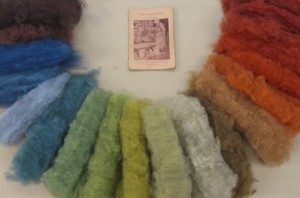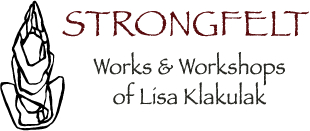Natural Dyes
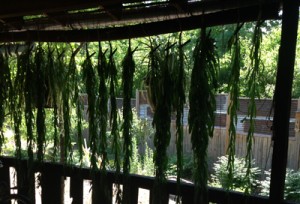
Natural materials such as flowers, leaves, husks, berries, bark, roots, dried insects, lichen and minerals were the sole means for coloring fibers before 1856. At this time William Henry Perkin discovered the artificial production of dye from a constituent of coal tar. Since, synthetic dyes have driven the textile industry and been accepted by the masses with dyes from natural materials rarely used except in “under developed” countries and by those devoted to preserving this aspect of our human story. Today, with an increasing interest in all things sustainable and natural, the use of natural dyes is on the rise.
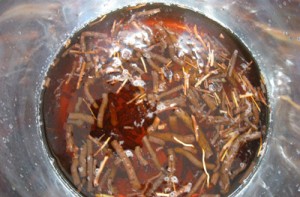
From garden plants and roadside growth to exotic cochineal insects and indigo extract, natural materials will imbue color onto fiber, though their light and wash fastness vary, as do the methods and techniques of application. Although there is much to be said for the experience of wild crafting natural materials and the beauty of colors that may initially present on the fiber, many colors are fleeting. It is therefore, advisable to consider the dye used in regard to the value of the items to be dyed and the longevity of color stability desired. Currently, STRONGFELT uses primarily seven colorants: cochineal insects, madder root, weld plants, myrobalan nuts, fustic wood, walnut hulls and indigo extract. Upon occasion, work will be dyed with other materials not as fast to express the concept of impermanence or the nature of the material, for example the protective quality of bark.
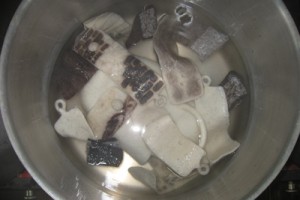
Natural dyes may be imbued onto fabric as surface design through various applications: printing/drawing with a thickened dye extract paste onto either a fabric that has been mordanted or by adding mordant to the paste, printing/drawing with concentrated dye or pigments onto a fabric that has been treated with a protein binder such as soy milk, and/or transferring color directly from the plant material (eco printing). STRONGFELT colors are submersion dyed on either the fiber, partially felted sheets of felt and/or fulled, finished items. STRONGFELT’s surface design is integrated primarily through felting techniques which results in surface texturing, although, occasionally mechanical resists are employed to resist mordant and/or dye adherence in specific areas.
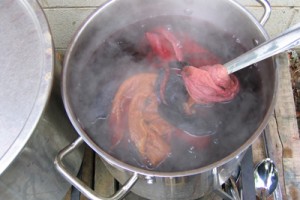
An indigo blue submersion bath is quite the exception, as no mordant is needed and a specific chemistry is required. To convert the blue pigment into a soluble dye, the bath necessitates an alkaline pH and the reduction of oxygen, which turns the bath a yellowish green below the surface. When the fiber is removed from the dye vat and is exposed to the oxygen in the air, the blue color develops. STRONGFELT has used a lye and hydrosulfite vat for this purpose, though experimentation with lime and natural fermentation is ongoing.
By supporting the use of natural dyes one can become more familiar and appreciative of their natural surroundings, have access to an incredible range of colors, relive an aspect of our human story and have comfort in not supporting synthetic industry.

